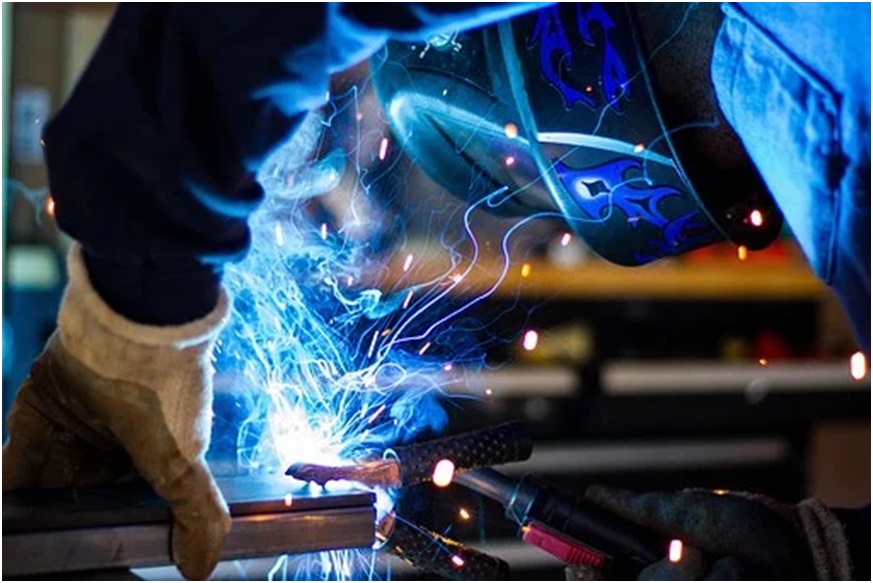Interesting Details All Soldering Professionals Must Know About the J-STD-001H Standard

The J-STD-001 “H” standard is the latest revision of the IPC’s (Association Connecting Electronics Industries) famous “J Standard.” The official title of this standard is “IPC J-STD-001.” It lists the requirements that all manufacturers of electronic assemblies and soldering professionals need to know. The standard is also known as “Requirements for Soldered Electrical and Electronic Assemblies.” It provides soldering and electronic assembly professionals with proper guidance on what materials to use (or not use), important manufacturing methods, and the latest quality verification criteria.
Who Creates the IPC J-STD-001 Standard?
Although the Association Connecting Electronics Industries (IPC) is the official publisher of the IPC J-STD-001 standard and all subsequent revised versions, this document is put together by various people/entities. It’s a consensus document that’s created by contributions from various electronic manufacturing companies, PCB manufacturers, consultants, suppliers, and even end-users. There’s a committee that designs the training programs based on these standards.
Back when IPC J-STD-001 “G” revision was launched in 2018, electronic manufacturing company leaders, top PCB manufacturers, and suppliers from eighteen countries provided their insights. Their opinions, demands, and views were represented in the IPC J-STD-001 “G” revision document. The “H” revision to this standard was released in the fall of 2020. This time, representatives from twenty-seven countries (nine more than “G” standard revision) worked on the standard.
What is the “H” Revision to the IPC J-STD-001 Standard?
The IPC J-STD-001 document is on a two-year revision cycle. Every two years, experts from the electronics manufacturing and assembly industries collaborate to improve the guidelines mentioned in these standards. Some significant changes that came with the “H” revision include –
- The previously independent standard called “IPC-J-STD-001G-AM1” is now a part of the IPC-J-STD-001H standard.
- There’s an all-new section on industry-accepted cleaning and residue removal methods (Section 8.0)
- The Resistivity of the Solvent Extract (ROSE) method is no longer acceptable for determining whether circuit boards are clean enough to qualify for manufacturing processes.
These are just some of the significant changes in the “H” revision. Aspiring soldering and electronic assembly professionals will get to know about J-STD-001H in-depth at their IPC-certified training and certification centers.
What’s the Difference Between IPC J-STD-001 Standard and IPC-A-610 Standard?
Since both the IPC J-STD-001 standard and the IPC-A-610 standard speak about component inspection processes, many professionals get confused and think that both the standards are the same/similar. The IPC-A-610 standard is only concerned with inspection processes that take place after the final product has been manufactured.
The IPC J-STD-001 Standard, on the other hand, covers the entire process of creating soldered connections and electrical assemblies. It even mentions what environmental conditions (lighting, temperature, etc.) soldering professionals need to maintain while working. The “J Standard” also speaks about topics like plated through-hole soldering, SMT soldering, inspection of solder joints, and conformal coating. Soldering professionals who want to be masters of their professions need to master both of these standards.
Who Needs to Follow the IPC J-STD-001H Standard?
If you aim to become a professional assembly process engineer, an assembly technician, a quality assurance supervisor, or a standard soldering/electronics assembly professional, you’ll need to receive IPC J-STD-001H certification. Certification in this standard enables professionals to become responsible creators of high-quality soldered electronic assemblies.
Certification can be obtained by attending IPC-authorized training centers. In these training centers, students gain access to soldering labs and various important instructional manuals. The licensed trainers prepare the students for certification examinations. The training programs involve a lot of demonstrations, pictures, and hands-on practice sessions. Topics of central focus include surface mount technology, wires/terminals, through-hole technology, and electronic component inspections.
What is IPC J-STD-001H Training?
IPC J-STD-001 training programs are multi-tiered. These programs are anchored on the latest IPC-J-STD-001H standard, which dictates how electronic assemblies that feature wires and terminals should be created. Licensed and IPC-certified training instructors lead these training programs. These experts can visit manufacturing sites or company facilities to offer classes. Here are some quick details about these training programs –
- To obtain certification, students have to demonstrate their knowledge of the IPC J-STD-001H standard.
- Then, they have to apply the information mentioned in the IPC J-STD-001H standard to real-life situations.
- Students also have to demonstrate their hand soldering skills; their wire/terminal preparation skills are also tested.
- Students have to demonstrate their knowledge of the latest PCB cleaning and conformal coating requirements.
- There are both written and demonstrative tests that students need to complete to pass the program.
- The credentials of the IPC J-STD-001H training program are portable. They’re recognized globally.
- Certifications are only valid for two years. Re-certification must be obtained by industry professionals every two years.
- Training takes five days for candidates of all modules.
The IPC J-STD-001H is frequently mentioned in electronics assembly contracts. That’s why anyone aiming to work in the manufacture of electronic assemblies must abide by the latest J standard soldering guidelines!